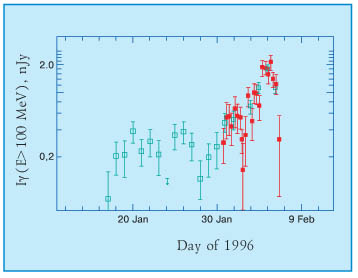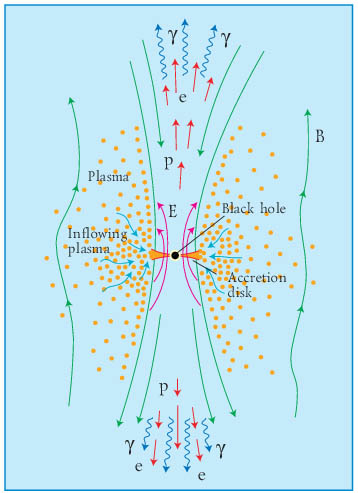CYlindrical GAmma-ray Monitor |
||||
|
The hard gamma radiation from AGN is produced most probably in the relativistic jets observed in the considerable part of these objects. In the center of AGN (and may be of all other galaxies) there is a supermassive black hole surrounded by the accretion disk, which is the source of the energy in these objects. The mechanism of the hard gamma radiation from these objects is not quite clear: synchrotron radiation, as well as inverse compton radiation of VHE and UHE electrons is possible. Some input may come from the neutral pion production in the collisions of relativistic protons and their subsequent decay. The problem of particle acceleration in the AGN jets is very important: the time of the electron energy losses in the jets is usually much less than their life time. These mechanisms are based on the acceleration on the shock formed during the jet motion in the circumnuclear gas, or due to electrodynamic acceleration in the electrical field around separate bubbles of the jets.
table of contents CYGAM (PDF, 450 Kb) Space Research Institute, 2002- 2003 |

